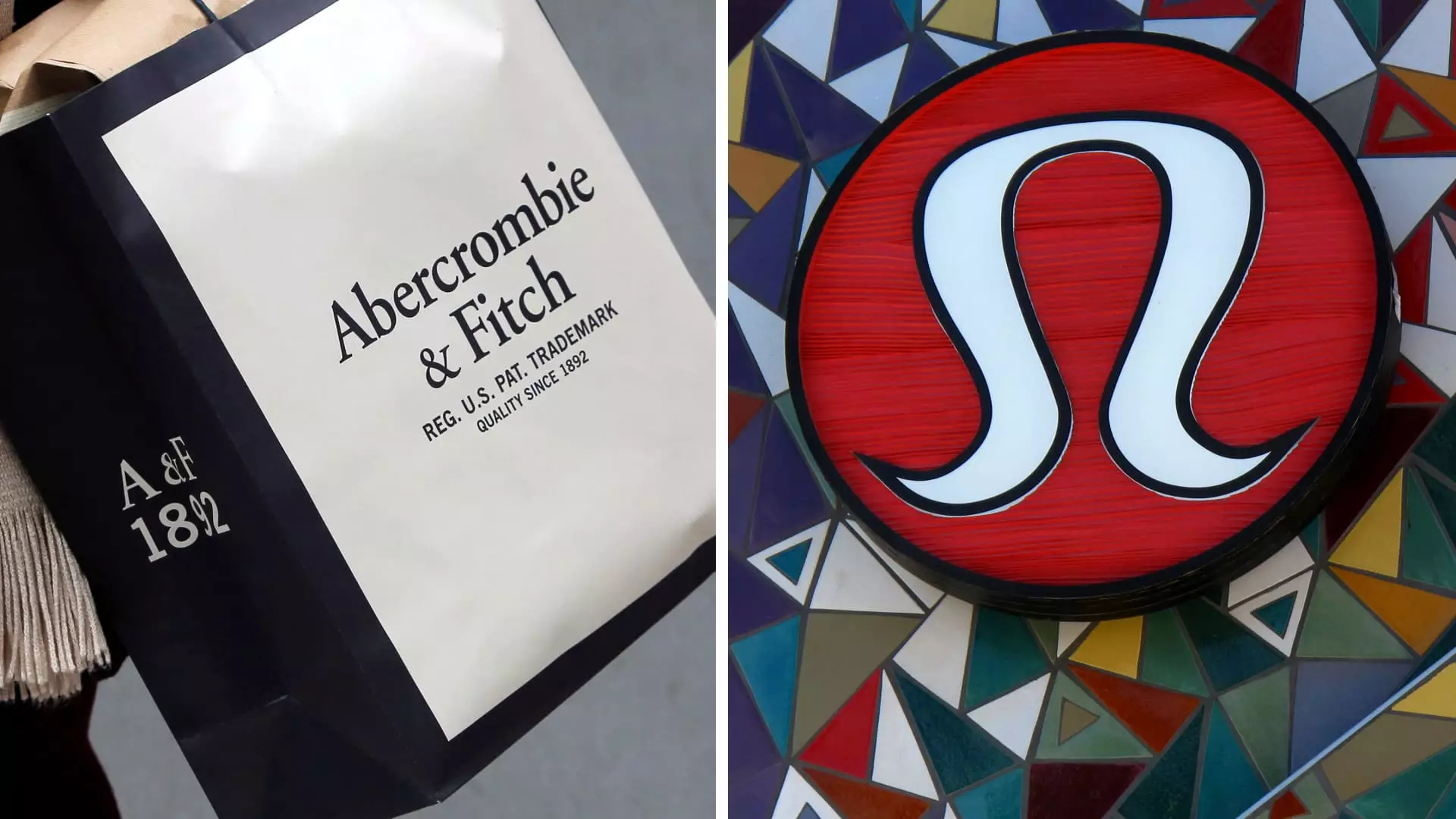As the holiday season unfolds in 2023, major retail companies are revealing their financial performance, creating a varied landscape fraught with contrasts and expectations. While several well-known brands have reported sales figures that exceed initial forecasts, the reaction from investors has been decidedly tepid. This article delves into the latest performance reports from several key players in the retail industry and examines how external factors and investor sentiments are impacting their stock valuations.
On Monday, several notable retailers including Lululemon, Abercrombie & Fitch, and American Eagle announced positive early holiday sales, leading them to revise their fourth-quarter outlooks upward. Lululemon’s updated forecast expects sales between $3.56 billion and $3.58 billion, showcasing a growth of 11% to 12% compared to last year’s figures. This optimism is somewhat tempered by the fact that after adjusting for an additional fiscal week in 2024, the real growth projection would fall to 6% to 7%.
Despite this encouraging news, the markets responded unfavorably. Shares for these companies dipped significantly, with Abercrombie experiencing the most dramatic decline, plummeting by approximately 17%. This drop raises questions about whether investors foresee limitations on Abercrombie’s growth trajectory after two years of rapid expansion. The mixed responses from the market underscore a reluctance to fully embrace positive sales outcomes when accompanied by concerns about sustainability and future performance.
In the backdrop of these results, consumer spending habits seem to be shifting, potentially impacting expectations for future sales growth. The latest report from Mastercard SpendingPulse indicates that retail sales—excluding automobile purchases—rose by 3.8% year-over-year from early November through December 24, a figure that, while positive, does not mirror the explosive growth seen in previous years. The National Retail Federation echoes this sentiment, projecting a modest sales increase of between 2.5% and 3.5% for the holiday period after factoring in inflation.
This tempered growth outlook suggests that consumers may be exercising greater caution and preference for value over volume, which could lead to fluctuations in long-term retail performance. Amidst a backdrop of economic uncertainty, retailers must adapt strategies to cater to a more discerning customer base that prioritizes quality and affordability.
Macy’s and the Struggles of Traditional Retail
Contrasting sharply with the fortunes of its peers is Macy’s, which painted a less favorable picture of its holiday season. The department store has revised its sales expectations downward, anticipating figures to be at or just below its earlier range of $7.8 billion to $8.0 billion. This news weighed heavily on Macy’s stock, dropping over 6% in early trading. The stark difference in performance between Macy’s and trendier retailers reveals a growing divide in the retail sector, where traditional department stores are struggling to keep pace with more specialized and agile competitors.
Interestingly, while Urban Outfitters reported a sales growth of 10% over the holiday period, the performance was uneven across its various brands. The company’s flagship Urban Outfitters brand lagged behind its peers, leading to its stock also dipping nearly 5%. This underperformance reflects the ongoing challenge faced by brands that may not resonate with consumers as strongly as they once did.
Future Prospects and Strategic Shifts
The strategic focus for several apparel retailers appears to be shifting toward profitability rather than sheer sales volume, as exemplified by Abercrombie’s CEO Fran Horowitz. By signaling a move toward enhancing profit margins amid growing competition, Abercrombie aims to balance sustainable financial growth with maintaining marketplace relevance. This approach acknowledges that while aggressive sales targets have been a hallmark of the past few years, the retail environment requires a recalibration of priorities.
Retailers entering 2024 will need to contend with not only the impacts of inflation and consumer sentiment but also with the high expectations set by periods of rapid growth. As brands gather at the annual ICR conference to showcase their early holiday results and interact with analysts, it becomes clear that the retail landscape is in a state of transition—one that will undoubtedly shape strategies in the coming year.
While the early signs of the holiday shopping season have revealed pockets of strength among certain retailers, the overall market reaction reflects a cautious approach. Investors are seemingly looking beyond immediate sales growth, weighing concerns about long-term sustainability and the capacity for these brands to maintain their upward momentum in an increasingly competitive landscape. As retailers navigate this complex environment, a strategic pivot toward profitability may very well become the key to thriving in 2024 and beyond.

Leave a Reply